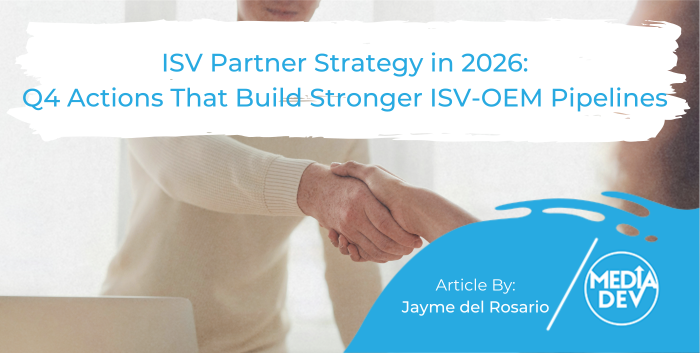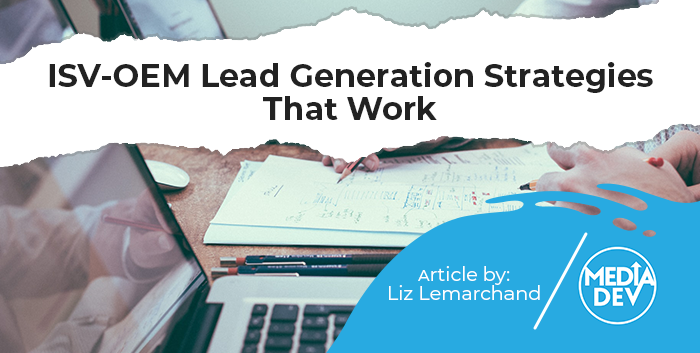Just when you thought you were out of the woods, here’s another one of those marketing acronyms coming at you again! This week I’ll cover ABM, or Account-Based Marketing for those of you who are new to the (not so new) term. So, what is it and why is it important, you say? Well, ABM is a way to “hyper-target” specific (hand-picked) accounts in an effort to engage them with your solutions. Usually, these accounts are of strategic importance for the organization targeting them, and have the potential to turn into big sales deals should they convert.
While most marketing is focused on industry sectors, products/solutions, or channel, account-based marketing brings all of these together in an effort to inspire customers with compelling content. ABM is thought of as an “alternative” B2B strategy because it concentrates sales and marketing efforts on a clearly defined set of target accounts within a market, and employs personalized campaigns designed to resonate with each account.
In the IT industry, this is especially relevant since propositions are often complex, and sales cycle lengthy. ABM is most frequently used to target large enterprise accounts; by finding multiple decision-makers across the organization, it’s possible to “attack” it from multiple angles at the same time. Marketing messages are designed based on the specific needs of the account (and each job function of the decision-makers you’re targeting), and can be highly effective if it’s done right.
So, what can you do to make sure your account-based marketing strategies are a success? Here are five steps to help you get started on the right path:
Step 1. Design a robust market intelligence plan
Of course, I’m assuming that you already know the accounts you want to target, and that you don’t need help first to figure out who they are… if this is not the case, you’ll need a “pre-step 1” in order to understand your ideal accounts (which differs from your buyer personas). This can be determined by the potential buying power, or by the prominence of the account itself.
Your accounts list can be small—no need to exceed 50 accounts if that’s your ideal target—and you can develop it by using a number of strategies depending on your level of ABM readiness. For example, you can evaluate your current customers and discover common attributes, (win-loss interviews can be a great way to do this by the way,) leverage predictive analytics, or simply go to your sales team and get a list from them.
Once you know the accounts that are in your “sweet spot,” you can design a market intelligence strategy to gather information on those accounts (to know the types of solutions they already deploy, who is part of the decision-making cycle, when budget is usually allocated for IT acquisition projects, etc) and profile key job titles within those accounts to reach out to with content on your value proposition.
One of the key features of a successful market intelligence strategy is being able to monitor companies as they evolve. Smart vendors monitor changes and trigger events; then personalize communications to that account based on those initiatives and challenges. Subscribing to public information services (like Google Alerts) can help, but tapping into other social intelligence will help complete the picture. Unlike PR-driven articles and press releases, social data helps uncover what key prospects care about. It is highly valuable for account-based marketing models. Agility (being able to re-direct or re-message when new information is discovered) will put the finishing touch on this critical step.
Step 2. Targeted content creation
When creating content, three important ideas need to apply:
1. Variation: Content variation means having case studies, e-books, videos, webinars on-demand, and infographics — because no two people are exactly alike, and everyone likes their content presented in different ways.
2. Industry focus: If I work for a bank, I am not necessarily going to relate to case study content on a construction company (and vice versa). It’s easier to convince someone when you can show them how you’ve helped a company exactly like theirs.
3. Job function-specific: The “what’s in it for me” must be central to all content, and showing people how your solution will help them in their daily lives by highlighting information relevant to their role is a big plus.
And, if you already have great content, you’re already one step ahead of the game!
Step 3. Build a list of accurate, role-based contacts
Once you have visibility on the accounts themselves and have viable content that you can use, you should start building a list of contacts within those accounts. By creating a list of role-based contacts, you’ll be sure to access the functions you are looking for (since job titles often don’t provide enough information). By using a combination of desk research and telemarketing tactics, you’ll be sure that the information you have is 100% up-to-date; then you can promote your content and obtain explicit opt-ins from contacts in order to receive it. Don’t forget that in Europe, new GDPR rules apply and you cannot email prospects content without their permission first.
Step 4. Design an educational outreach program
Once you have identified the right people and have obtained their opt-ins, you can start to educate them about your offer, and increase awareness about your brand. Through telemarketing, emailing and regular nurturing, your contacts will be exposed to your key value proposition; your content should start working to generate some qualified sales opportunities. Make sure to follow up after someone has attended a webinar and reach out periodically to people who have downloaded a whitepaper through outbound calling. This will help you determine the level of sales maturity for that account over time, and create close proximity with them.
Step 5. Lead generation and appointment setting
Of course, the ultimate goal is to move your prospects through the funnel to the point of them being sales-ready. Qualifying the right decision-makers, nurturing them over time, and periodically checking in with them to see where they are with a potential project, will surely reap benefits in the mid to long term. But it may also help to shorten the actual sales cycle once they are ready to sit down in a sales meeting. Having sales appointments at the right time may help enable prospects to move forward on their acquisition project faster than they would otherwise, and will set the stage for more effective sales conversations.
Conclusion
ABM is attractive to B2B-focused companies because it can provide higher alignment with sales, and help close larger deals with strategic accounts faster. It’s a process that can be easily piloted and replicated across an organization over time, and may even help to improve marketing ROI. Once you understand the key fundamentals of ABM across the funnel, (getting started, making progress, and measuring your results), it can become a gateway to broader, more successful ABM programs in the future.
Sources:
https://www.forbes.com/sites/forbesagencycouncil/2017/07/21/five-reasons-to-implement-account-based-marketing-into-your-b2b-marketing-strategy/
https://martechtoday.com/account-based-marketing-new-buzzword-new-reality-130144
http://terminus.com/7-steps-account-based-marketing-abm/
http://blog.topohq.com/account-based-marketing-11-tactics-to-drive-your-abm-process/
https://www.marketo.com/account-based-marketing/








